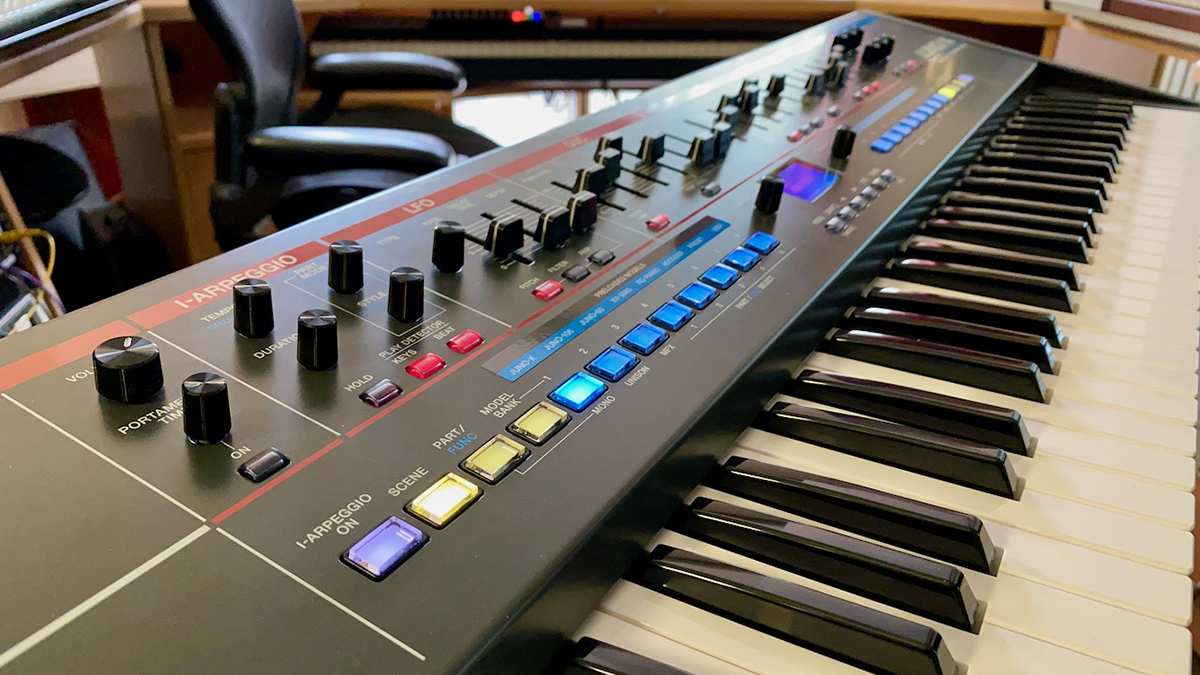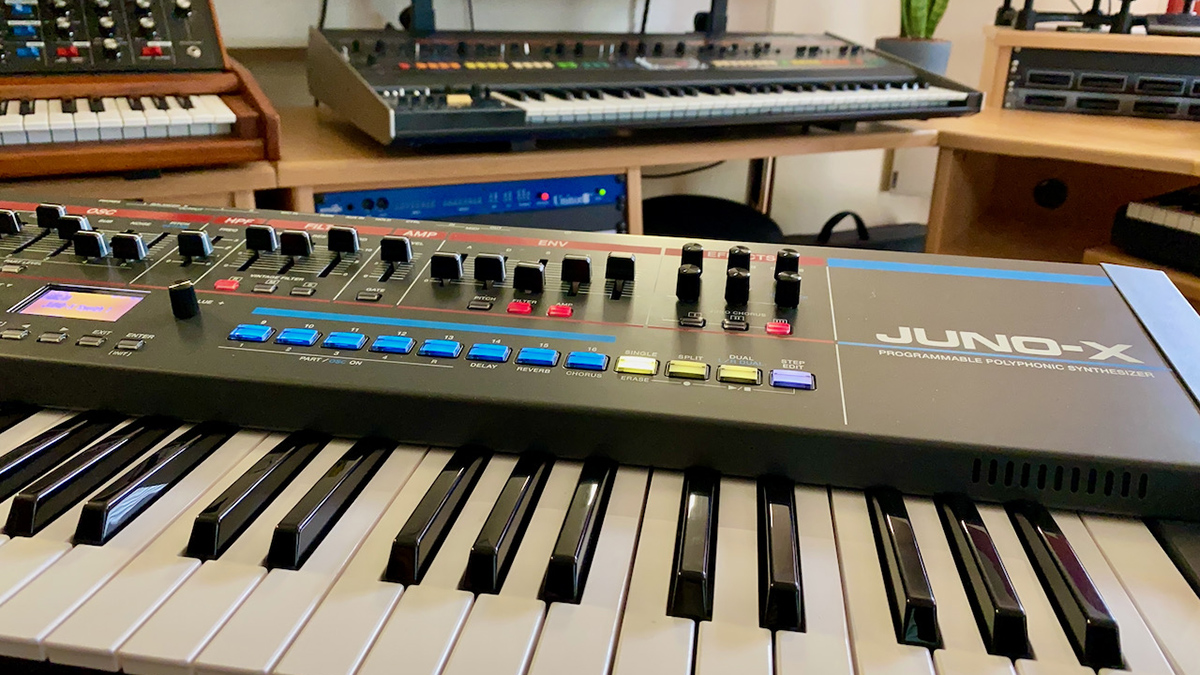First look: how does Roland's Juno-X synth compare to the Juno-60 and 106?
We put it side-by-side with a classic '80s Juno

If you were to shut your eyes, walk into a room and be presented with Roland’s new Juno-X synth, you would literally do a double-take. It’s something of a shapeshifting doppelgänger, not least because it looks more like a Juno-106 from 1984 than any number of beaten-up second-hand 106s that you may care to locate through auction sites.
We were treated to a first look and play, thanks to Andy from Roland UK, who paid us a visit with a Juno-X ($2,000/£1,719) under his arm. We put it through some paces and grooves, while comparing it to one of our very own Junos; an original Juno-60 from 1982.
Analogue elephant
So this leads us to the elephant in the room: this Juno-X has a digital core, but the reality is, if you didn’t know that it wasn’t analogue, you simply wouldn’t be able to tell.
The Juno-X is housed in the most beautifully crafted aluminium chassis, with 106-style end cheeks. The styling is superbly accurate, right down to the layout and font used for the legends and graphics.
Moreover, it’s weighty, equipped with XLR, 1/4-inch jack and USB outputs, and sports a built-in power supply which accepts an IEC cable. No wall-warts here!
You play the first notes and find yourself immediately reminiscing. There’s a beautiful new keyboard action, culled from the latest Fantom series, paired with a more robust pitch/mod lever than was ever found on a 106. The faders and pots feel secure, with a slightly reassuring resistance as you make each fader-based tweak.
This synth sounds and feels just like a Juno, but that’s only part of the joy. As hinted, the sound engine behind the Juno-X is firmly in the digital domain, so this is less a clone (despite its drop-dead-gorgeous retro looks) and far more a Juno for the next generation. It relies on Roland’s ZEN-Core system, offering plenty of capacity for performance straight out of the box, as well as expansion in the future.
Want all the hottest music and gear news, reviews, deals, features and more, direct to your inbox? Sign up here.

The Juno-X ships with three Juno software models; Juno-106, Juno-60 and the all new Juno-X. Each model brings something to the table, but all are unmistakably Juno.
We begin with the Juno-60 model; in play, it sounds identical to the real thing, and based on our tests, that extends right down to the envelope phase times. As you access the assigned waveform faders, the DCOs switch on and off exactly as they do on the original, and we simply couldn’t tell it apart from our own Juno-60.
The Juno-106 model, on the other hand, offers the same meat in different gravy, with the appeal of a slightly weightier bottom-end and the ability to Unison the oscillators, just like on the original. It boasts all the 106’s appeal, and within moments, we were reaching for the filter cutoff and adjusting the envelope, just on the 106 back home.
The original Juno-60 and 106 were similar but radically different machines, each with its own strengths. The modelling itself uses the same technology as the Roland Cloud plugins, and as any Cloud users will tell you, these are sublimely accurate (and in many cases indistinguishable) recreations of the originals.
The difference here comes with the deployment of an engaging interface, which makes the whole process of playing and adjusting your sound nothing short of an utter pleasure. The faders provide a full resolution of 1024 steps, so there is no hint of digital parameter stepping, while the patch architecture allows layering. You can create some huge and immensely inspiring Juno textures in this mode.
Something Xtra
But what of the X? If you’re looking for progress, it’s the new Juno-X engine that could be considered the main event. It provides lots of elements previously unavailable at the Juno level, such as the ability to mix and blend the onboard waveforms, where previously you could only switch them on or off.
There’s also the introduction of a SuperSaw option, which defeats the ubiquitous PWM in favour of aliasing a Sawtooth to the power of 7, with an accompanying detune function. It sounds huge, and punching in the chorus sends the bottom end over a cliff. There’s a choice of different filter modes/styles, based around Roland, Sequential and Moog, alongside three envelope generators for pitch, filter and amplitude control.
It might sound cheesy to say, but it really feels like a next-level Juno. The basses thunder, while the pads are sweet, and the filter can be considered or gnarly, depending on where you want to go. There’s a healthy dose of back-end effects, including plenty of distortion, which amplifies the Juno’s filter as it lets rip!


Time’s up!
We only had a short time with the Juno-X, much of it with the arpeggiator firmly engaged, but it’s already made a very big impression. There’s plenty more to unravel in our future review, which will see the Juno-X reveal plenty of additional functionality.
But what’s impressed us most of all is that the Juno is back, in sound and style, and it’s more versatile than ever before. It’s a proper synth, for players and synthesists alike. Don’t be fooled by the digital backbone - it’s an analogue beast in spirit!

